Top 10 Most Important Global Shipping Routes Map

Global shipping routes Map are the lifeblood of international trade, facilitating the movement of goods across vast distances. Every year, billions of tons of cargo travel along these routes, connecting markets from one continent to another. The importance of these routes cannot be overstated, as they directly impact economies, industries, and the flow of goods that we depend on daily. A well-managed Global Shipping Routes Map not only helps businesses plan efficient transportation but also plays a crucial role in ensuring the smooth operation of the global economy. In this post, we will explore the top 10 most important global shipping routes and how they shape the world’s commerce.
Why Shipping Routes Matter: Economic and Strategic Importance
Shipping routes are the backbone of the global economy. They enable the transportation of goods like oil, consumer products, machinery, and raw materials, all of which are essential for manufacturing and trade. A disruption in any major shipping route can have cascading effects, leading to shortages, price increases, and economic instability.
Beyond economics, shipping routes also hold significant strategic importance. Nations often vie for control over key waterways because these routes are vital for national security and influence. For example, access to certain chokepoints on the Global Shipping Routes Map can provide control over global oil flows, which impacts geopolitical relations and market prices. The dynamics of these shipping lanes make them not only vital for commerce but also a focal point for international politics.
How Global Shipping Routes Are Mapped
A Global Shipping Routes Map is the result of intricate planning and mapping of sea lanes that connect different parts of the world. These maps highlight not just the major routes but also the strategic chokepoints — narrow waterways where large volumes of shipping traffic pass. These chokepoints are often hotspots for economic and political tensions, as control over them can significantly influence global trade.
Key elements that are considered when mapping these routes include depth, width, weather conditions, and navigational safety. These factors are crucial for planning efficient and safe voyages, particularly for the world’s largest container ships. The maritime industry uses advanced tools like satellite imagery, Geographic Information Systems (GIS), and other navigational technology to update and manage these maps.
Top 10 Most Important Global Shipping Routes
Now, let’s dive into the top 10 most important shipping routes in the world, each of which plays a pivotal role in global commerce.
Panama Canal Route (Atlantic to Pacific)
One of the most crucial Global Shipping Routes Map features is the Panama Canal, which connects the Atlantic and Pacific Oceans. This route drastically shortens travel times for ships between the east and west coasts of the Americas, saving both time and fuel. The Panama Canal is especially important for trade between the U.S., Latin America, and Asia, making it an indispensable part of global supply chains.
Suez Canal Route (Europe to Asia)
The Suez Canal is another key chokepoint on the Global Shipping Routes Map that connects Europe to Asia through Egypt. It allows ships to bypass the lengthy journey around the southern tip of Africa, reducing travel times and costs. This canal is vital for the transportation of oil, natural gas, and consumer goods, making it one of the busiest and most strategic shipping lanes in the world.
Strait of Malacca (Indian Ocean to Pacific Ocean)
The Strait of Malacca is a narrow, but highly trafficked, waterway that connects the Indian Ocean to the Pacific Ocean. Located between Malaysia and Indonesia, this route is one of the world’s busiest maritime chokepoints, handling a large percentage of global trade. It is particularly critical for oil shipments and containerized cargo between Asia and the rest of the world.
English Channel (North Sea to Atlantic Ocean)
The English Channel is the busiest waterway in the world, linking the North Sea with the Atlantic Ocean. It facilitates trade between Europe and the UK, making it essential for the transportation of goods like fuel, food, and machinery. This route is crucial for European commerce, and any disruption here can have significant economic consequences for both the UK and mainland Europe.
Strait of Hormuz (Oil Shipping Route)
The Strait of Hormuz is one of the most sensitive shipping routes, connecting the Persian Gulf to the Arabian Sea. It is an essential passage for global oil trade, with nearly 20% of the world’s crude oil passing through this narrow waterway. Any geopolitical instability or conflict in this region can have far-reaching effects on global oil prices, making it a key route on the Global Shipping Routes Map.
Bosporus Strait (Black Sea to Mediterranean)
The Bosporus Strait connects the Black Sea to the Mediterranean, making it an important shipping route for countries in Eastern Europe and the Caucasus. This route is vital for the export of oil, grain, and other commodities from the Black Sea region, especially from Russia and Ukraine. The Bosporus also serves as a critical link for shipping between the Middle East and Europe.
North Atlantic Route (Europe to North America)
The North Atlantic route is one of the longest established and busiest maritime routes, facilitating trade between Europe and North America. It is particularly significant for the transport of raw materials, manufactured goods, and technology. This route is pivotal for transatlantic commerce, connecting key economic regions like the European Union, the U.S., and Canada.
South China Sea Routes (Asia-Pacific Trade)
The South China Sea is a key waterway for international trade in Asia, connecting China, Japan, South Korea, and other Southeast Asian nations to global markets. With the rise of China’s economy, this region has become increasingly important for both raw materials and finished goods. It is one of the most vital maritime corridors on the Global Shipping Routes Map.
Cape of Good Hope Route (Alternative to Suez Canal)
The Cape of Good Hope route serves as an alternative to the Suez Canal for ships traveling between Europe and Asia. Located at the southern tip of Africa, this route is longer and more costly but is often used when the Suez Canal is blocked, as seen during the 2021 blockage of the Ever Given. It is a critical lifeline for global trade, especially for regions dependent on maritime traffic around the African continent.
Northern Sea Route (Arctic Shortcut)
The Northern Sea Route, which runs along Russia’s Arctic coast, is emerging as a new shortcut for shipping between Europe and Asia. Climate change has made this route more navigable in recent years, offering a faster alternative to traditional routes like the Suez Canal. As more ships begin using this Arctic route, it could reshape global shipping patterns and reduce travel times significantly.
Map of the World’s Key Shipping Routes
For a better understanding of these important maritime corridors, a Global Shipping Routes Map can provide a visual representation of these key routes and their interconnectedness. This map highlights the critical chokepoints, such as the Suez Canal and the Strait of Hormuz, and shows how the routes facilitate global trade. It is a crucial tool for shipping companies and governments to monitor and manage traffic in these vital areas.
Challenges and Risks in Major Shipping Routes
Shipping routes are not without their challenges. Piracy, especially off the coast of Somalia and in the Strait of Malacca, remains a significant concern. Congestion, particularly in busy chokepoints like the Panama Canal and the English Channel, can lead to delays and inefficiencies. Political tensions in areas like the Strait of Hormuz and the South China Sea can also disrupt global shipping, while natural disasters like typhoons and hurricanes can threaten both ships and the infrastructure supporting these routes.
Future of Global Shipping Routes: Trends and Innovations
The future of Global Shipping Routes Maps is likely to be influenced by innovations and emerging trends. The opening of the Arctic routes due to climate change could revolutionize shipping by reducing transit times between Europe and Asia. Furthermore, larger ships and the development of new canals, such as the Nicaragua Canal, could further alter the dynamics of global trade. Sustainable shipping practices, including the use of cleaner fuels and greener technologies, will also play an increasingly important role in shaping the future of these vital maritime corridors.
Conclusion: Securing the Arteries of Global Trade
In conclusion, global shipping routes are more than just paths for transporting goods — they are vital arteries that keep the world’s economy flowing. With the global economy growing increasingly interconnected, it is crucial to protect and maintain these shipping routes. The Global Shipping Routes Map is a tool that helps us understand the complexity and significance of these maritime corridors, highlighting the need for security, innovation, and efficient management in the years ahead.
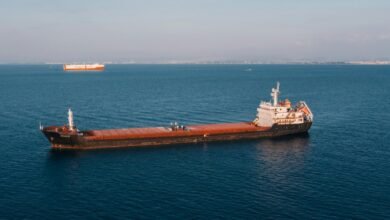
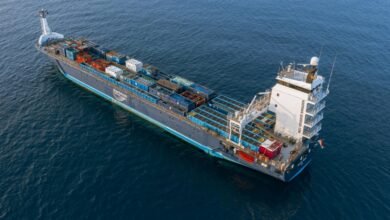
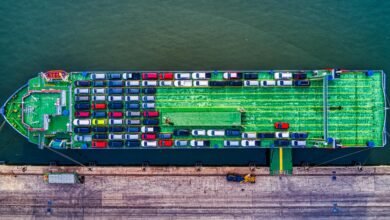
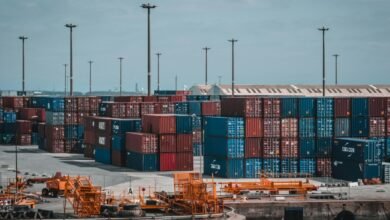
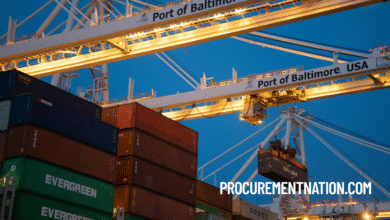
One Comment